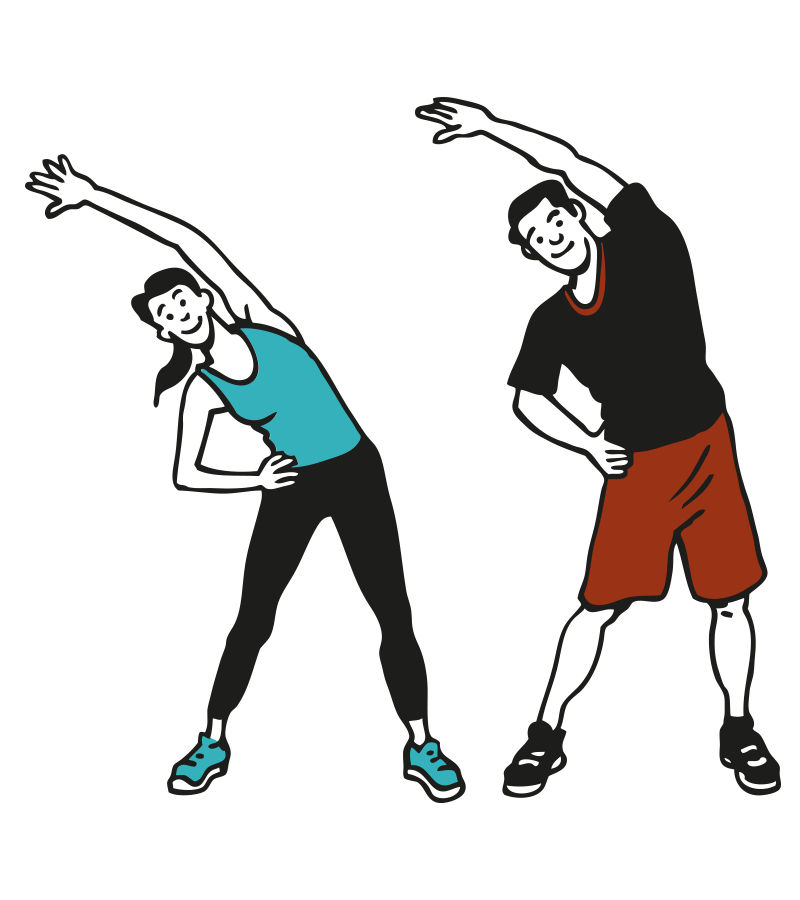Putting on weight can put pressure on your joints – not great for those with XLH who may already suffer from joint pain and stiffness, especially when it’s known that three to six times of your bodyweight goes through your knees and ankles when you walk. But regular activity can help keep your weight down and improve muscle strength and flexibility.
Your first step is to talk to your family doctor or healthcare team about making positive changes; they can advise you against anything that might be harmful. If they say everything’s OK, follow the expert advice below to kick-start a healthy new you.
Finding the right exercise
You may not feel able to start exercising but there is an activity for everyone, whatever your fitness level or interests.
Liz Ebelthite, lead physiotherapist in Cheshire, UK says, “Exercise is recommended for most people with osteoporosis, osteoarthritis and other chronic pain conditions, so I would apply similar rules to those with XLH. Start off with some form of cardiovascular activity, like swimming, walking or gentle cycling. This will help get your heart rate up, burning calories, while taking it easy on your joints. You could try something like aqua cycling or aqua aerobics; the water provides both resistance, which makes your muscles work harder, and support for your joints."
Exercises to build strength
 Before adding in any specific exercise regimen please seek medical advice.
Before adding in any specific exercise regimen please seek medical advice.
Add in exercises to gradually strengthen your muscles, such as using free weights like dumbbells or the machines at the gym. It’s important to keep your upper body strong, as you may be relying on your arms a lot more to help you with daily activities like getting in and out of bed.
Liz also recommends core-strengthening exercises. "These can help improve your balance and also work on keeping your hips strong."
Not sure what to do?
Still not sure which exercise is right for you? Ask your family doctor to refer you to a physiotherapist or specialist personal trainer who can help you find a suitable activity. This might just be armchair exercises until you build up your strength and confidence.
Activities to avoid
“High-impact exercises like running, dance classes, or activities with a risk of falls, such as ice skating, should be avoided as they can increase the risk of fractures, unless you get the OK from your healthcare team,” says Liz, lead physiotherapist in Cheshire, UK.
Also, if you're recovering from surgery or an injury, or you have surgery planned for the future, don’t start exercising until your specialist and/or care team gives you the go-ahead.
Meanwhile, stretching exercises are important to help improve balance – essential to help reduce your risk of falls – but get advice from a physio or a specially-trained instructor before starting an activity like Pilates or yoga. While they can help keep your joints flexible, some of the postures may put too much strain on your joints, or increase your risk of falling over.
Exercise, pain and fatigue
Pain
It’s normal to ache a little after starting a new exercise regimen, but this usually gets better as you get fitter. “If you start with short periods of exercise, interspersed with rest days, you can monitor the effects on your body,” says Liz. “But if you suffer from abnormal pain during exercise, or experience a flare-up on rest days, stop exercising and ask for advice.”
Fatigue
If you suffer from fatigue, don’t push yourself too hard when you start off. Stick to a regular exercise routine (at least 30 minutes of moderate aerobic exercise like walking on most days) as this has been shown to help beat fatigue and increase energy levels.
Keep on moving
Azmina Govindji is a registered dietitian and spokesperson for the British Dietetic Association. "If you’re not able to exercise regularly, you need fewer calories, so watching what and how much you eat becomes even more important," says Azmina.
Even if you can only manage a short walk, or simple armchair exercises, any movement will help you burn calories and keep your weight down.







 Before adding in any specific exercise regimen please seek medical advice.
Before adding in any specific exercise regimen please seek medical advice.